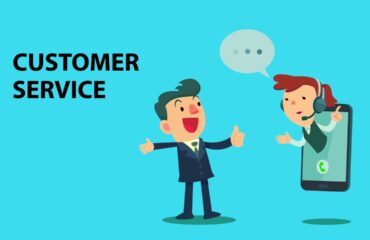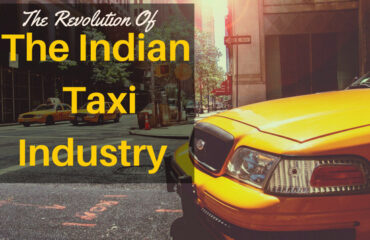
Like most people, I love driving and prefer to drive myself and my family around whenever I get the chance.
I would be half way into the drive and some red light on the dashboard pops up…Am sure most of you have had this experience…
Now you are not sure if it is something critical and if you need to go to the service centre immediately or if it’s just a warning which needs to be addressed later or it could even be a failed sensor…
So, what if we had an option which would instantly let us know what we had to do …wouldn’t that be a great help and stress reliever?
Let’s take another example:
Your working day mornings are always a rush…You reach your workplace and suddenly feel you had forgotten to switch off the heater or the air-conditioning or God forbid, the stove… Since there is no one at home there is no way for you to check unless you rush back home or request the watchman to break in …
That’s where the internet of things or IOT comes in handy…
What is the Internet of Things?
The Internet of Things, or IoT, refers to billions of physical devices around the world that are now connected to the internet, collecting and sharing data. Thanks to cheap processors and wireless networks, it’s possible to turn anything, from a stove to an air-conditioner to a house light to be part of the IoT. This adds a level of digital intelligence to devices that would be otherwise dumb, enabling them to communicate without a human being involved, and merging the digital and physical worlds.
A more technical definition would be
The Internet of Things (IoT) is a system of interrelated computing devices, mechanical and digital machines, objects, animals or people that are provided with unique identifiers and the ability to transfer data over a network without requiring human-to-human or human-to-computer interaction.”.
Pretty much any physical object can be transformed into an IoT device if it can be connected to the internet and controlled from an external point
A complete IoT system integrates four distinct components: sensors/devices, connectivity, data processing, and a user interface.
1) Sensors/Devices
First, sensors or devices collect data from their environment. This could be as simple as a temperature reading or as complex as a full video feed.
So as in my first example the sensor in the car detected that there was something which was not as per the laid-out specifications. These sensors would need to be connected to any device that we plan to make as part of the IOT.
2) Connectivity
Next, that data is sent to the cloud.
The sensors/devices can be connected to the cloud through a variety of methods including: cellular, satellite, Wi-Fi, Bluetooth, low-power wide-area networks (LPWAN) or connecting directly to the internet via ethernet.
3) Data Processing
Once the data gets to the cloud, software performs some kind of processing on it.
This could be very simple, such as checking that the temperature reading is within an acceptable range. Or it could also be very complex, such as using computer vision on video to identify objects (such as intruders in your house).
But what happens when the temperature is too high or if there is an intruder in your house? That’s where the user comes in.
4) User Interface
Next, the information is made useful to the end-user in some way. This could be via an alert to the user (email, text, notification, etc).
For instance, in my first example it could be through a communication to the nearby service centre in case the car complaint needs to be addressed immediately or as a call or text to me if I failed to switch off anything at home in my morning rush.
Also, a user might have an interface that allows them to proactively check in on the system. For example, a user might want to check the video feeds in their house via a phone app or a web browser.
However, it’s not always a one-way street. Depending on the IoT application, the user may also be able to perform an action and affect the system. For example, the user might remotely switch off the ac or lights or stove or geyser or anything.
And some actions are performed automatically. Rather than waiting for you to adjust the temperature, the system could do it automatically via predefined rules. And rather than just call you to alert you of an intruder, the IoT system could also automatically notify relevant authorities or if the stove is kept on it could be automatically programmed to switch off if no activity is sensed for a period.
How big is the Internet of Things?
As per estimates there are around 8.4 billion IoT devices were in use in 2017, up 31 percent from 2016, and this will likely reach 20.4 billion by 2020.
Out of the 8.4 billion devices, more than half will be consumer products like smart TVs and smart speakers. The most-used enterprise IoT devices will be smart electric meters and commercial security cameras.
Companies like Google and Samsung understand this. Google bought smart thermostat maker, Nest Labs, for $3.2 billion, and Samsung purchased connected home company SmartThings for $200 million.
Countries (consumers and companies) can gain huge benefits of the Internet of Things in all fields
Agriculture
IOT helps farmers by
- Sensing for soil moisture and nutrients.
- Controlling water usage for optimal plant growth.
- Determining custom fertilizer profiles based on soil chemistry.
- Determining the optimal time to plant and harvest.
- Reporting weather conditions.
- Self-driving tractors can be controlled remotely, providing significant savings in labour costs.
Livestock monitoring
Thanks to livestock monitoring, ranchers can use wireless IoT applications to gather data regarding the health, well-being, and location of their cattle. This information saves them money in two ways:
· It helps identify sick animals, so they can be pulled from the herd, preventing the spread of disease.
· It lowers labour costs because ranchers can identify where their cattle are located.
Predictive maintenance
Keeping assets up and running has the potential to significantly decrease operational expenditures, saving companies millions of dollars. With IOT, managers in a range of industries can determine when a piece of equipment will fail before it does.
These IoT-enabled systems can sense warning signs, use data to create maintenance timelines and pre-emptively service equipment before problems occur.
Smart metering
A smart meter is an internet-capable device that measures energy, water or natural gas consumption of a building or home, Traditional meters only measure total consumption, whereas smart meters record when and how much of a resource is consumed. Power companies are deploying smart meters to monitor consumer usage and adjust prices according to the time of day and season.
Smart meters also give power consumption visibility all the way to the meter, so utilities can optimize energy distribution and take action to shift demand loads.
Asset and Supply Chain tracking
The goal of asset tracking is to allow an enterprise to easily locate and monitor key assets, including along the supply chain (e.g. raw materials, final products and containers) to optimize logistics, maintain inventory levels, prevent quality issues and detect theft.
One industry that heavily relies on asset tracking is maritime shipping. On a large scale, sensors help track the location of a ship at sea, and on a smaller scale, they can provide the status and temperature of individual cargo containers.
Each refrigerated container needs to be equipped with temperature sensors, a processing unit and a mobile transmitter. When temperatures differ from the optimal mark, crew can be notified and begin needed repairs.
Connected vehicles
Connected vehicles are all the rage now. In simplest terms, these are computer-enhanced vehicles that automate many normal driving tasks – in some cases, even driving themselves.
There are several advantages of self-driving cars. Accident avoidance is a major incentive, because the car can respond faster than a human. The ultimate manifestation is the overall reduction of vehicles. Driverless taxis could replace a family’s second car that sits idle all day. More vehicles can travel closer on the road at the same time, and the computer can operate the vehicle more economically than most people.
Fleet management
For companies that rely on transportation as part of their business, fleet management helps them remove or minimize the risks associated with vehicle investment, improving efficiency and productivity while reducing overall transportation and staff costs.
Waste Management
For example, asset tracking is being used by cities for waste management purposes by giving trash collectors the most efficient routes to collect the build-up of trash in urban environments.
So what does the future hold for IoT?
GE believes that the “Industrial Internet” (their term for IoT) will add $10 to $15 trillion to global GDP in the next 20 years.
According to estimations by the McKinsey Global Institute, the IoT will have a total economic impact of up to $11 trillion by 2025.
Currently less than 0.1% of all the devices that could be connected to the Internet, are connected to the Internet, just think of the tremendous potential and limitless opportunities this brings for business and society.
Have always been a great fan of Science fiction movies particularly Star Trek and looks like we will soon reach what we used to see in Star Trek with lights switching on automatically as we enter a room…self-driving taxis picking you up as and when required…where you can monitor anything and everything from anywhere including how your farm is growing …and your doctor has a tab on your health and maybe even predicts when you are likely to get a cold….we might end up losing a bit of our privacy but everyone’s productivity will grow by leaps and bounds just like the way it did with laptops…mobile phones and the internet…
So, embrace the change and stay connected…IOT is around and happening…



